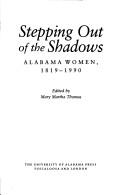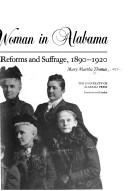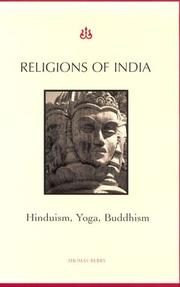| Listing 1 - 10 of 44 | << page >> |
Sort by
|
Book
Year: 1952 Publisher: Cambridge: Heffer,
Abstract | Keywords | Export | Availability | Bookmark
 Loading...
Loading...Choose an application
- Reference Manager
- EndNote
- RefWorks (Direct export to RefWorks)
Book
ISBN: 9812619720 9789812619723 Year: 2009 Publisher: Singapore Marshall Cavendish Editions
Abstract | Keywords | Export | Availability | Bookmark
 Loading...
Loading...Choose an application
- Reference Manager
- EndNote
- RefWorks (Direct export to RefWorks)
When Mary Thomas left the shores of England for Singapore in December 1939 to live a leisurely life of an Englishwoman in a colonial outpost, she did not expect to soon find her circumstances greatly changed. After the Japanese bombs fell on 8 December 1941, Mary chose not to rush for the first boat out of Singapore and instead stayed on to serve in the Medical Auxiliary Service, and in 1942 she was interned in Changi Prison by the Japanese conquerors together with a few thousand unfortunate people. This is the true story of how a young Englishwoman spent three and a half years under the watch
Prisoners of war -- England -- Biography. --- Prisoners of war -- Singapore -- Biography. --- Thomas, Mary, 1906-2009. --- World War, 1939-1945 -- Medical care -- Singapore -- Prisons. --- World War, 1939-1945 -- Prisoners and prisons, Japanese. --- World War, 1939-1945 -- Singapore -- Personal narratives. --- World War, 1939-1945 --- World War, 1939-1945 --- Prisoners of war --- Prisoners of war --- Prisoners and prisons, Japanese --- Thomas, Mary,

ISBN: 0585207879 9780585207872 0817307567 9780817307561 081739432X 9780817394325 Year: 1995 Publisher: Tuscaloosa, Ala. University of Alabama Press
Abstract | Keywords | Export | Availability | Bookmark
 Loading...
Loading...Choose an application
- Reference Manager
- EndNote
- RefWorks (Direct export to RefWorks)
The history of Alabama has been told, but most often in terms of white men and their politics and economics. Now a more complex story of the state is emerging from the shadows of history in a new book that investigates the place of women from the perspective of race, class, and gender. The writers reexamine the roles of both black and white women as missionaries during Reconstruction, as reformers and suffrage leaders in the Progressive era, and as members of the state legislature in the 20th century.
Women --- Gender Studies & Sexuality --- Gender & Ethnic Studies --- Social Sciences --- Human females --- Wimmin --- Woman --- Womon --- Womyn --- Females --- Human beings --- Femininity --- History. --- Alabama --- Social life and customs. --- Vrouwen. --- Women. --- Manners and customs. --- Alabama. --- Ceremonies --- Customs, Social --- Folkways --- Social customs --- Social life and customs --- Traditions --- Usages --- Civilization --- Ethnology --- Etiquette --- Rites and ceremonies --- Â-lâ-pâ-mâ --- Aellabaema --- Aellabaema-ju --- AL --- Ala. --- Alabamah --- Alabamo --- Alampama --- ʻAlapama --- Alybamas --- Arabama --- Arabama-shū --- Arabamashū --- Élábéemah Hahoodzo --- Ìpínlẹ̀ Alabama --- Medinat Alabamah --- Politeia tēs Alampama --- Shtat Alabama --- State of Alabama --- Ŝtato de Alabamo --- Yalabama --- Yalabama Zhou --- Πολιτεία της Αλαμπάμα --- Αλαμπάμα --- Штат Алабама --- אלאבאמא --- אלבמה --- מדינת אלבמה --- アラバマ --- アラバマ州 --- 亚拉巴马 --- 亚拉巴马州 --- 앨라배마 --- 앨라배마 주

ISBN: 0585201137 0817360107 9780585201139 0817305645 9780817305642 9780817360108 9780817393533 0817393536 Year: 1992 Publisher: Tuscaloosa, Ala. University of Alabama Press
Abstract | Keywords | Export | Availability | Bookmark
 Loading...
Loading...Choose an application
- Reference Manager
- EndNote
- RefWorks (Direct export to RefWorks)
Between 1890 and 1920 middle-class white and black Alabama women created a large number of clubs and organizations that took them out of the home and provided them with roles in the public sphere. Beginning with the Alabama Woman's Christian Temperance Union in the 1880s and followed by the Alabama Federation of Women's Clubs and the Alabama Federation of Colored Women's Clubs in the 1890s, women spearheaded the drive to eliminate child labor, worked to improve the educational system, up-graded the jails and prisons, and created reform schools for both boys and girls. Suffrage was also an item on the Progressive agenda. After a brief surge of activity during the 1890s, the suffrage drive lay dormant until 1912, when women created the Alabama Equal Suffrage Association. During their campaigns in 1915 and 1919 to persuade the legislature to enfranchise women, the leaders learned the art of politics--how to educate, organize, lobby, and count votes. Women seeking validation for their roles as homemakers and mothers demanded a hearing in the political arena for issues that affected them and their families. In the process they began to erase the line between the public world of men and the private world of women. These were the New Women who tackled the problems created by the rapid industrialization and urbanization of the New South. By 1920 Alabama women had created new public spaces for themselves in these voluntary associations. As a consequence of their involvement in reform crusades, the women's club movement, and the campaign for woman suffrage, women were no longer passive and dependent. They were willing and able to be rightful participants. Thomas's book is the first of its kind to focus on the reform activities of women during the Progressive Era and the first to consider the southern woman and all the organizations of middle-class black and white women in the South and particularly in Alabama. It is also the first to explore the drive of Alabama women to obtain the vote.
Women --- Gender Studies & Sexuality --- Gender & Ethnic Studies --- Social Sciences --- Human females --- Wimmin --- Woman --- Womon --- Womyn --- Females --- Human beings --- Femininity --- Political activity --- Suffrage --- History. --- Societies and clubs --- History
Book
Year: 1950 Publisher: New York : William-Frederick press,
Abstract | Keywords | Export | Availability | Bookmark
 Loading...
Loading...Choose an application
- Reference Manager
- EndNote
- RefWorks (Direct export to RefWorks)
Philosophy, Medieval, in literature. --- Skepticism --- Skepticism in literature. --- History --- Chaucer, Geoffrey, --- Philosophy.
Book
ISBN: 9781626230415 Year: 2015 Publisher: New York (N.Y.) Thieme
Abstract | Keywords | Export | Availability | Bookmark
 Loading...
Loading...Choose an application
- Reference Manager
- EndNote
- RefWorks (Direct export to RefWorks)

ISBN: 0231107811 Year: 1996 Publisher: New York : Columbia University Press,
Abstract | Keywords | Export | Availability | Bookmark
 Loading...
Loading...Choose an application
- Reference Manager
- EndNote
- RefWorks (Direct export to RefWorks)
Buddhism --- Hinduism --- Yoga --- Bouddhisme --- Hindouisme --- Yoga --- India --- Inde --- Religion --- Religion
Book
ISBN: 089012017X Year: 1996 Publisher: New York : Columbia University Press,
Abstract | Keywords | Export | Availability | Bookmark
 Loading...
Loading...Choose an application
- Reference Manager
- EndNote
- RefWorks (Direct export to RefWorks)
Buddhism --- Bouddhisme
Book
Year: 1950 Publisher: New York (N.Y.): William-Frederick
Abstract | Keywords | Export | Availability | Bookmark
 Loading...
Loading...Choose an application
- Reference Manager
- EndNote
- RefWorks (Direct export to RefWorks)
Book
Year: 1950 Publisher: New York The William-Frederick Press
Abstract | Keywords | Export | Availability | Bookmark
 Loading...
Loading...Choose an application
- Reference Manager
- EndNote
- RefWorks (Direct export to RefWorks)
| Listing 1 - 10 of 44 | << page >> |
Sort by
|

 Search
Search Feedback
Feedback About UniCat
About UniCat  Help
Help News
News